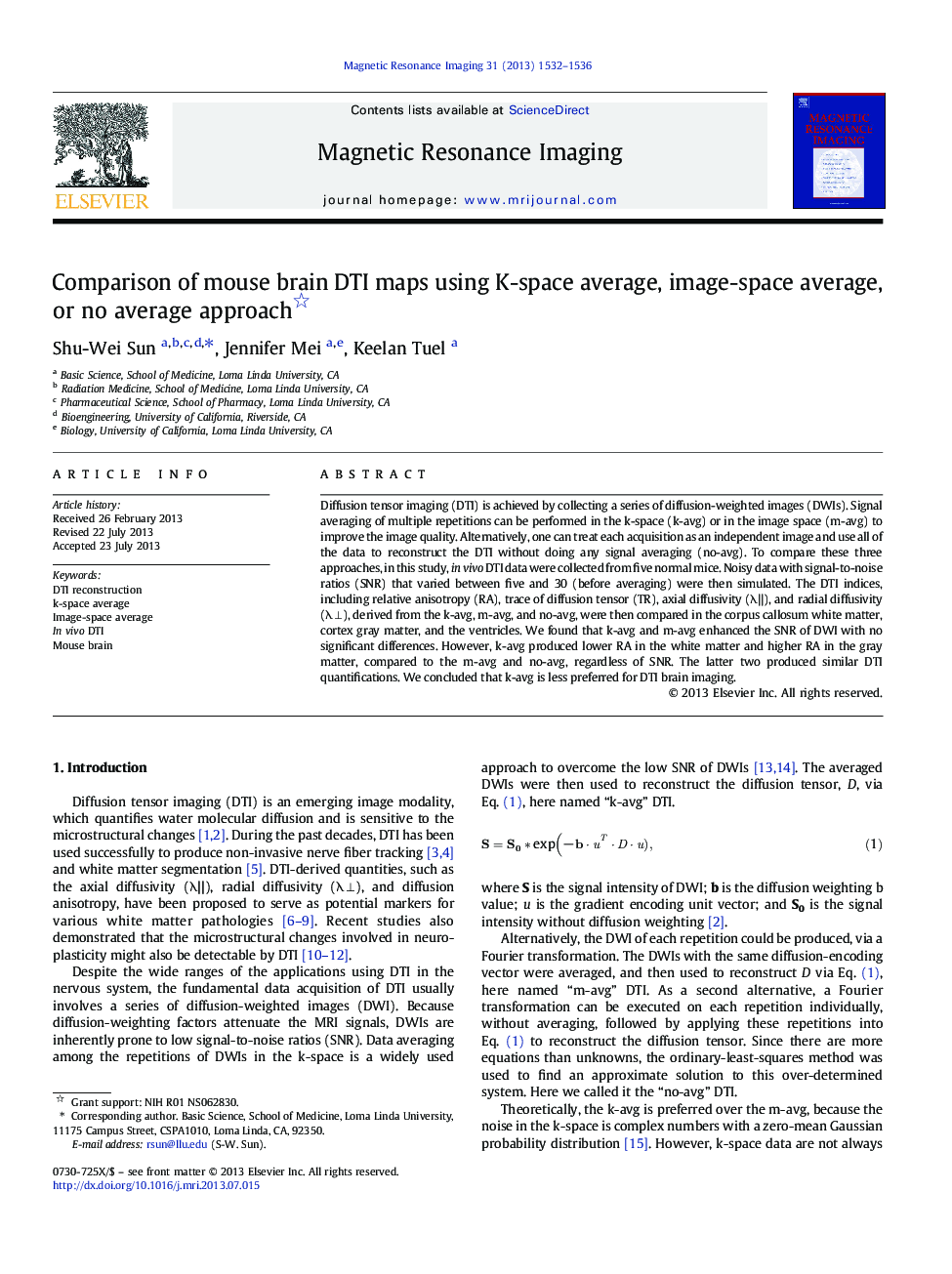| کد مقاله | کد نشریه | سال انتشار | مقاله انگلیسی | نسخه تمام متن |
|---|---|---|---|---|
| 10712649 | 1025217 | 2013 | 5 صفحه PDF | دانلود رایگان |
عنوان انگلیسی مقاله ISI
Comparison of mouse brain DTI maps using K-space average, image-space average, or no average approach
دانلود مقاله + سفارش ترجمه
دانلود مقاله ISI انگلیسی
رایگان برای ایرانیان
کلمات کلیدی
موضوعات مرتبط
مهندسی و علوم پایه
فیزیک و نجوم
فیزیک ماده چگال
پیش نمایش صفحه اول مقاله

چکیده انگلیسی
Diffusion tensor imaging (DTI) is achieved by collecting a series of diffusion-weighted images (DWIs). Signal averaging of multiple repetitions can be performed in the k-space (k-avg) or in the image space (m-avg) to improve the image quality. Alternatively, one can treat each acquisition as an independent image and use all of the data to reconstruct the DTI without doing any signal averaging (no-avg). To compare these three approaches, in this study, in vivo DTI data were collected from five normal mice. Noisy data with signal-to-noise ratios (SNR) that varied between five and 30 (before averaging) were then simulated. The DTI indices, including relative anisotropy (RA), trace of diffusion tensor (TR), axial diffusivity (λâ), and radial diffusivity (λ â¥), derived from the k-avg, m-avg, and no-avg, were then compared in the corpus callosum white matter, cortex gray matter, and the ventricles. We found that k-avg and m-avg enhanced the SNR of DWI with no significant differences. However, k-avg produced lower RA in the white matter and higher RA in the gray matter, compared to the m-avg and no-avg, regardless of SNR. The latter two produced similar DTI quantifications. We concluded that k-avg is less preferred for DTI brain imaging.
ناشر
Database: Elsevier - ScienceDirect (ساینس دایرکت)
Journal: Magnetic Resonance Imaging - Volume 31, Issue 9, November 2013, Pages 1532-1536
Journal: Magnetic Resonance Imaging - Volume 31, Issue 9, November 2013, Pages 1532-1536
نویسندگان
Shu-Wei Sun, Jennifer Mei, Keelan Tuel,